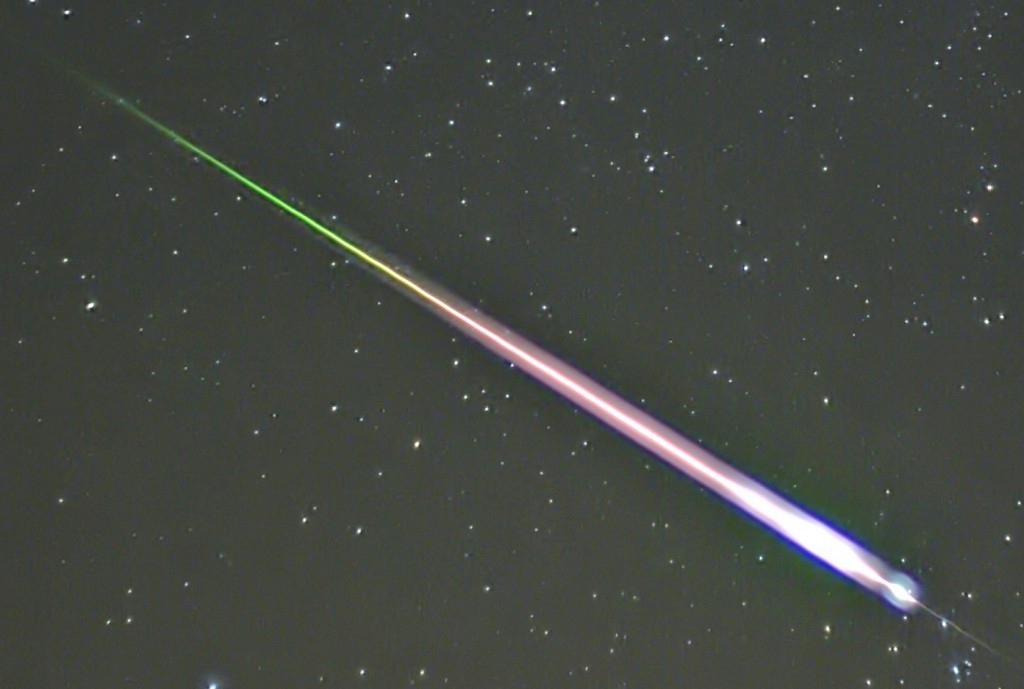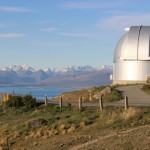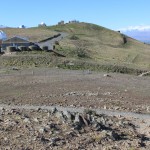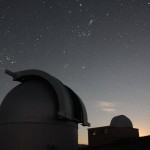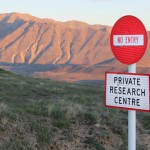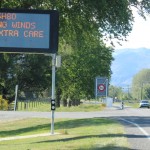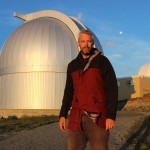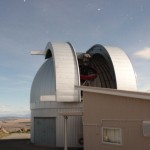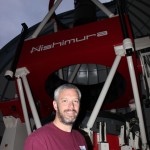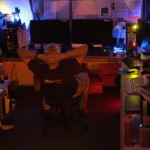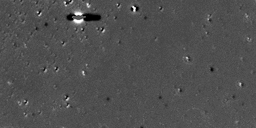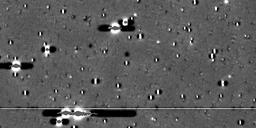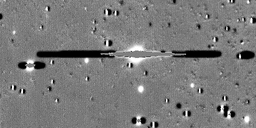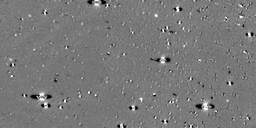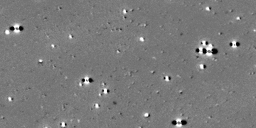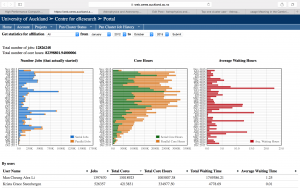It is nothing special, but I have discovered several doubly eclipsing binaries in MOA database. The figure below is one of them. It was achieved by first substracting the mean light curve with 200 bins from the one folded with P=0.409d and then redoing the period analysis to see if there is any hidden periodic variation.
Funded MSc Thesis — 2017 — Virtual Reality Data Visualisation
I have funding available (one year, domestic) for an MSc student to develop our capacity to visualise multi-parameter datasets using virtual reality. The full advertisement is below. If you are interested, please get in touch.
The Department of Physics, in collaboration with the Intelligent Vision Systems Team in the Department of Computer Science, has funding available for an MSc thesis student to develop tools for the visualisation of multi-parameter data sets using virtual reality. The student will continue to develop existing prototype code to improve our capability to interrogate data sets using an Oculus Rift. Data from the fields of astronomy, cosmology and drone flights are available to test and improve the codes used. The student will also investigate the use of hand gesture control as part of an improved human control interface with the analysis codes. Some programming experience is required. The funding for this project comprises one year’s MSc (domestic) fees.
Plot.ly
I’ve become a fan of Plot.ly — an online service for plotting data and sharing it. I was mainly interested in figuring out how to plot my useage of the NeSI PAN cluster computer — particularly for seeing how many computer nodes I was using at any given time, and how many jobs were left to do. I found that with Plot.ly you can stream data to their server and it will update a plot as the new data come in. Their tutorials for setting this up are reasonably straightforward, and I managed to write a little python code to stream the state of my jobs on the cluster (with a little help of crontab and scp):
Screenshot from this afternoon:
2016 Honours Projects with NJR
Here’s my list of Honours projects for 2016. If you are keen to do one of these, please email me or drop by to discuss.
1. Creating a Differential Image Motion Monitor for Astronomical Seeing
This project will require the student to set up one of the Department’s 40 cm Meade telescopes as a seeing monitor. Seeing is a measure of atmospheric turbulence. This project will require the student to work with the engineering facilities to affix a DIMM mask to the telescope, set up a CCD camera on the telescope and run DIMM observation software to measure atmospheric seeing. The student will have to be comfortable working at night, and have a full driver’s licence.
2. Multidimensional Dataset Visualisation with an Oculus Rift
This project will require the student to investigate the software available for displaying multidimensional datasets using an Oculus Rift. The key objectives are to have a suite of software tools available to allow a user to navigate complex multidimensional data via virtual reality immersion. Students should have a reasonable level of programming ability.
3. Finding Earth-sized planets orbiting White Dwarf stars
This project will require the student to obtain estimates of the number of white dwarf stars visible in the 1.8 meter MOA-II telescope field of view, estimate how many of these systems would have a transiting earth-sized planet, and propose an observation schedule for use by MOA to discover these planets.
4. Detecting Atmospheric Meteor trails
Meteors entering the Earth’s atmosphere leave a trail of ionised particles. We have a software-defined radio system set up to detect radio signals from Christchurch which are forward-scattered off these trails. This system is working successfully, but can be improved upon. The honours project will comprise optimising the system to improve the number of detected meteor trails, to compile statistics of this year’s meteor showers and report them to the International Meteor Organisation. The project would also comprise making the observed data available via the Internet in real-time.
Amusing Historical Entry in MJUO Accommodation Log
Here’s a photo of my last entry in the Mount John University Observatory Accommodation Logbook, prior to this year’s visit. The logbook keeps a record of who stayed at the accommodation block on the mountain, and for how long for each observation trip:
Equipment issues
There were some equipment issues on the 27th and 28th of September, as well as the 9th and 11th of October so these days do not contain the full 24 hours worth of data, as the software was not recording continuously on these days. The software, SDR# has a tendency to crash from time to time, usually after connecting to the computer to check that the noise floor has not dropped or increased. On 27th of September, I checked the program once just before noon and it was only the next day in the morning that I noticed that there were no files downloading in the DropBox throughout the day and over night. After connecting to the computer to see if it was still working, I saw that the program was not responding and I had to restart it. Since it seems that it was not be responding for most of the day of the 27th and over night on the 28th of September, no signals were detected and recorded and therefore those two days are also missing some data. The same thing again happened on the 9th of October, but I checked the program at around 10pm so only the data during the day from about noon until 10pm is missing. Seeing as those are approximately the times when there are the least amount of meteors entering our atmosphere, I can assume that majority of the signals for the 9th of October were recorded and only a few were missed.
A few days before the 11th of October, the noise floor started varying a lot and many false positive files were recorded that filled up the DropBox to its capacity. On the 11th of October, overnight, the noise floor dropped by a further 2dB and no files were recorded – both signals and random, varying peaks were missed. I made a decision to drive out to Ardmore with a USB stick to manually transfer the data from the computer to my laptop, which I used for analysing the data, and also check the equipment to see why the noise floor was varying so much. I checked all of the connections to see if anything had come loose and thus became a source of extra noise, including the connections inside of the balun of the antenna. After I checked the balun, the random peaks disappeared and the significant varying of the noise floor stopped and there was also an increase in signal detection. This could indicate that the connections inside the balun had either come loose throughout the project, maybe due to storms and wind at the location, or they were never properly screwed in from the beginning. I got in touch with a technician about the loose connection and this is currently in the process of being fixed. The increase in signal detection could also be due to the increased meteor activity from the Orionids meteor shower.
Since the onset of the project, a new version of the receiver has been released, called Airspy R2 so in the future, it might be useful to look into investing into the new receiver to see if it would increase the sensitivity of the equipment and be able to detect even more faint signals. A signal amplifier could be added to the antenna to amplify any low power signals, allowing for them to also be recorded. However, an amplifier could amplify the noise as well, thus looking into shielding the receiver would be necessary if an amplifier was to be added. A filter could also be added if wished, but it is not necessary as there is a frequency setting in the software that allows only the target frequency to trigger recording.
It has been very exciting and interesting to work on this project this year and I hope that next year someone will take over and carry on improving my set up and observing and recording meteor activity here in New Zealand.
Results
So, it’s been a while since I last wrote a post and I thought I should write an update with my results.
I have observed meteors for 98 days, and I have detected a few peaks of some meteor showers that have occurred during that time.
The following graph shows the cumulative number of meteors that have been detected over the course of the project. There are some clear peaks on the 3rd of August, and 19th of August, which correspond to the Southern Iota Aquarids and the Northern Iota Aquarids meteor showers respectively. According to the table mentioned in a previous post, there was another peak of the Northern Delta Aquarids meteor shower on the 13th of August, however this wasn’t detected. This might be due to the position of the radiant in the sky relative to my antenna. Since my antenna is very directional and only looks for meteors at a certain distance and direction (between Auckland and Christchurch), if the meteors from the meteor shower are not crossing this path then they won’t be detected.
There is also a slight peak on the 19th of September, which corresponds to the peak of the Piscids meteor shower. The last meteor shower that was detected and recorded was the Orionids meteor shower, which peaked on 21st and 22nd of October. These two dates stand out from the surrounding few days and on both days there was the same number of meteors recorded.
There is a difference between the predicted hourly rate of the meteors during the peaks of the meteor showers, and the hourly rates that were recorded. This is because the predicted hourly rate, also called the Zenith Hourly Rate (ZHR), is the number of meteors per hour an observer would see if there were no obstructions in the observer’s view, no light pollution either from surrounding lights or the Moon, and the radiant of the meteor shower was at the zenith. This means that the ZHR only applies to visually observable meteors in ideal conditions, whereas my antenna looks for radio signals that have been reflected off meteor trails, regardless if the meteor was observable or not. This indicates that I should have detected more meteors than the ZHR predicted for all meteor showers, however as mentioned previously, since my antenna is very directional, the meteors need to cross the path between the receiver location and the transmitter location. This means that quite possibly a lot of the meteors from the meteor showers could have been missed. The exception to this explanation is the Southern Iota Aquarids meteor shower, which peaked on the 3rd of August. The peak of the meteor shower had more meteors detected than what the ZHR predicted. This indicates that the comet which formed the Southern iota-Aquarids meteor shower has left behind many small particles that cannot be visually observed, but can form a trail which is sufficient to reflect a radio signal.
The following graph is the cumulative number of meteors that were detected in each hour over the course of the project. The shape of this graph fits with the theory that there are more meteors entering our atmosphere in the early morning hours than during the day, however there is a distinct peak at 11pm.
To try and figure out where this peak could have come from, the hourly meteor rates were graphed for each month.
This graph shows that there is a peak at 11pm for each month. For each meteor shower that was observed, their radiants transit close to midnight, which means that at around 11pm, the radiants of the meteor showers are at an optimal position relative to the antenna direction and so the most meteors can be detected at this time. August has the highest peak, which may also come from the July meteor showers, (Pisces Austrinids, Alpha-Capricornids and Southern delta-Aquarids) whose active dates over lap with the active and peak dates of the August meteor showers that were observed. Although the peaks for the July showers were not detected, as the project was not running at the time, the remnants of those showers could have affected the August meteor rates. All three July showers have radiants that transit close to midnight, thus these meteors can also contribute to the increased number of meteors at 11pm for the month of August.
Since all months contribute to the peak at 11pm, this project would need to be run for longer than 3 months in order to link this peak to the radiant of each meteor shower and when it gets above the horizon. By observing meteor activity for a longer period of time, and observing the other meteor showers that occur throughout the year, the peak times and their relationship to when the radiant reaches a certain altitude could be checked and tested.
The following pie chart shows the relative amount of long overdense, short overdense and underdense meteor trails. This chart shows that 54% of the total number of signals that were detected were reflected off underdense meteor trails, while 23% were long overdense and 22% were short overdense meteor trails. From this figure it can be deduced that out of the total number of 4261 signals detected, the chances of the meteor trail being underdense or overdense (either short or long) are almost equally likely – close to 50%. However, for this to be fully statistically confirmed, the project would have to be run for a much longer period of time.

Pie chart showing the amount of long overdense, short overdense and underdense meteor trails detected.
Last, but not least, I have made a video and posted it on this link here, to help explain how the software works and what I am looking for.
So that’s it with the results! I have observed meteor showers and their peaks, and have confirmed the prediction that most meteors enter our atmosphere in the early morning hours. I have found a distinct peak of meteor activity at 11pm which I could only link to the radiants of the meteor showers. To fully confirm this, the project would need to be run for much longer. Last, but not least I have found that detecting underdense and overdense meteor trails are close to being equally likely.
Observing for MOA at Mount John, Lake Tekapo
I’m doing an observing run at Mount John, Lake Tekapo!
- The MOA-II telescope dome and Lake Tekapo
- The Mount John University Observatory from the South Lookout
- The MOA-II telescope and Orion, just before moonrise.
- Doesn’t stop the tourists.
- Yep. Got windy up there at times.
- Me, MOA and the moon.
- MOA in the moonlight.
- I’ve not been in Tekapo during the summer.
- The 1.8 metre Nishimura telescope. Me with beard.
- Bathing in the light of a million LEDs.
Minor Planets in the MOA Database
Here are some little animations of minor planets passing through some of the crowded star fields in the MOA database. The images are difference images, meaning that the images of stars have been subtracted away. What you’re looking for in each of these animations below is a moving dot — an asteroid moving through the field.
Each one of these images is 1 / 640 th of the total field of view of one of the MOA-II telescope’s fields. And MOA observes 22 fields towards the Galactic Centre. I found these by eyeballing the images. Working on a better way.
Top one cluster user
Top one cluster user in terms of total cores used. And I can foresee it is going to last for a year.






